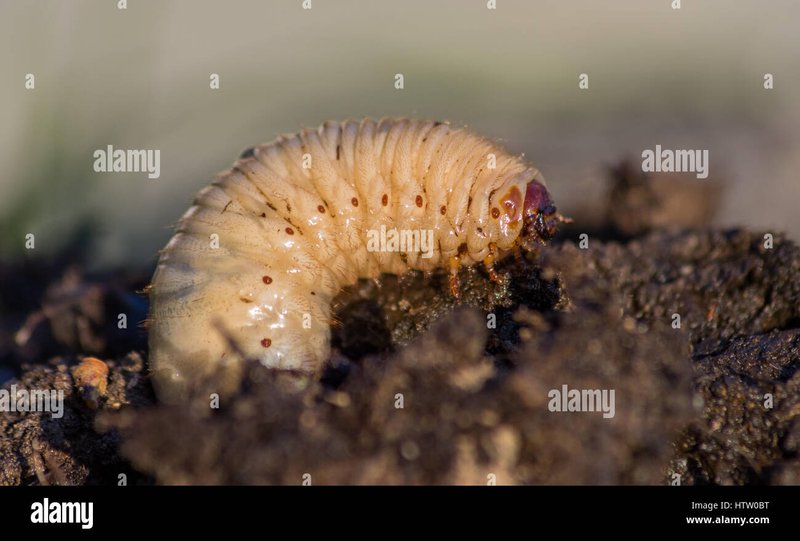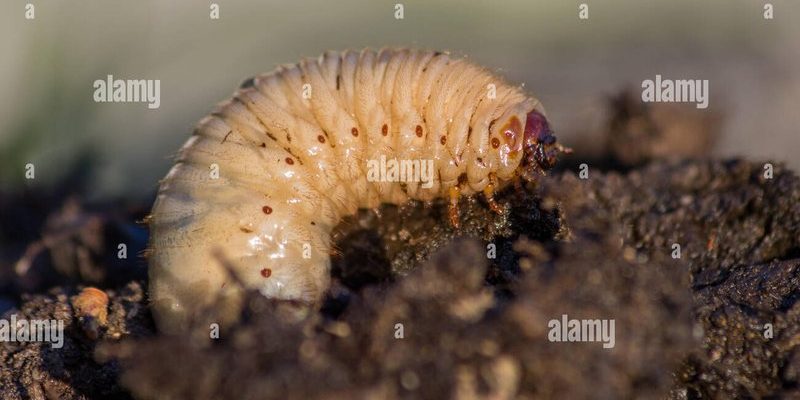
Grub worms are most active during specific times of the day, which can be crucial for knowing when to treat your lawn. Understanding their activity hours can really change how you manage pests in your garden. Plus, knowing about their habits can give you a better chance of having a healthy yard. So, what does their daily schedule look like? Let’s explore that and more.
Understanding Grub Worm Behavior
Grub worms, primarily the larvae of beetles like June bugs, love to feast on grass roots and other organic materials in the soil. Their behavior is heavily influenced by temperature and moisture levels. You might notice that these little guys are great at hiding during the daytime when it’s hot and dry. Why is that? Simply put, they’re avoiding the heat and the threat of drying out.
Grubs typically spend the day buried deep in the soil, seeking comfort in the cool, damp earth. This protective behavior helps them conserve moisture and avoid predators. As dusk approaches, however, they come to life, making their way closer to the surface to munch on grass roots. Knowing this can help you determine the best time to check for them!
When Are Grub Worms Most Active?
So, when should you actually look for grub worms? The best time to catch them in action is usually during the evening and early morning hours. As the sun sets and temperatures drop, they start to surface. This is when they’re most likely to be munching away at your grass.
During warm summer nights, you might find them actively feeding until about midnight. They’ll then retreat back into the soil as dawn breaks. If you’ve got a healthy lawn but suspect grubs might be lurking about, take some time in the evening after the sun goes down to check your yard—it could make a world of difference.
Temperature and Moisture Impact
Temperature plays a huge role in grub worm activity. In hotter climates, high afternoon temperatures drive them deeper into the ground. Conversely, in cooler weather, they might pop up a bit earlier in the evening. It’s all about the weather for these little guys!
Moisture also affects their activity. Grub worms thrive in moist soil, so a recent rain can lead them to become more active. If you’ve just had a rainstorm, take a stroll outside in the evening and you might see them near the surface, making it prime hunting time for any critters looking for a late-night snack!
Signs of Grub Worm Infestation
Now that you know when they’re active, how can you tell if you have a grub worm problem? Look for these telltale signs:
- Brown patches in your lawn that seem to die quickly.
- Loose grass that can be easily pulled back, revealing bare patches beneath.
- Increased bird activity in your yard, as birds love to snack on grubs.
- Nighttime visits from raccoons or skunks that are digging for food.
If you spot any of these signs, it’s time to take action before your lawn suffers even more damage!
Effective Prevention and Control
So, what can you do to keep those pesky grubs at bay? There are a few methods you can employ to manage them effectively:
1. Healthy Lawn Practices: Maintain a healthy lawn with proper watering, fertilization, and aeration. Healthy grass is more resilient to grub damage.
2. Natural Predators: Encourage birds and beneficial insects in your garden. They are great at keeping grub populations in check.
3. Nematodes: These microscopic worms can be introduced to your lawn to hunt down grubs. Nematodes are a natural and environmentally friendly option.
4. Chemical Treatments: If you have a severe infestation, you might consider insecticides specifically designed for grubs. Use these with caution and always follow the manufacturer’s instructions.
Remember, timing is everything—apply treatments during the early stages of grub activity for the best results!
Understanding what time of day are grub worms most active is essential for maintaining a healthy lawn. By knowing their habits, you can catch them off guard and take the necessary steps to protect your garden. Whether you’re out looking for signs in the evening or employing preventative measures, knowledge is the first step to a healthier yard.
Grub worms might be small, but they can wreak havoc if you don’t stay on top of them. Keep an eye on the temperature, moisture, and those evening hours to manage these little pests effectively. Your lawn will thank you!

